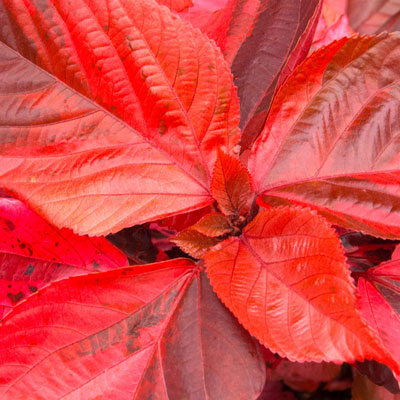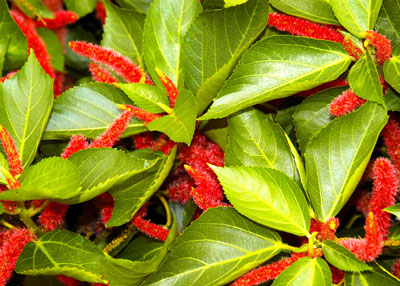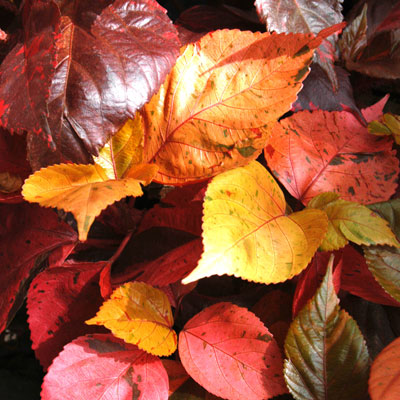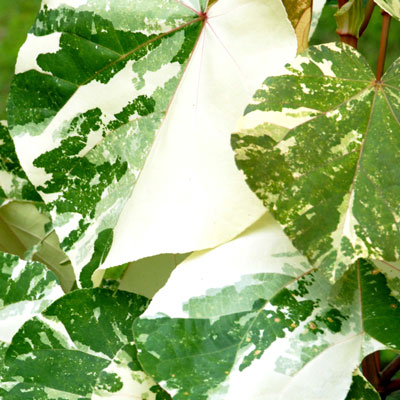Acalypha Achievers

It was back around 1960 that some of the big Houston parks were showcasing copper plants in massed plantings spring clear ‘til frost. Mom and Dad and I did most of our shopping in Houston back then. (College Station was a town of 6,000 residents. Ducks and I wear 5-E shoes, plus I wanted to see those big Houston nurseries!)
In the 1960s Prof. A.F. deWerth grew another species out of the genus, Acalypha hispida, or chenille plant, as a container crop in the Texas A&M Floriculture greenhouses. I loved those plants with their graceful, caterpillar-like flowers set against bright green leaves.

When I came back to Texas from two degrees at Ohio State and two fun years of teaching vocational horticulture in Shelby, Ohio, I took a job in the old red “castle” in Downtown Dallas where the county agent’s office was located. I was the county horticulturist, and our building was surrounded by beds filled with chenille plants. My bet is that my friend Phil Huey, himself a TAMU graduate in floriculture, learned to love them from Prof. deWerth. Parks, commercial landscapes and home gardens were all showcasing copper plants. I felt right at home.
Well, over the years these plants have fallen from favor. That’s a shame, because they’re easy to grow. Few pests bother them, and their colors are rich in the summer and they get several shades richer when fall’s cool weather rolls in.

I’ve noticed new types coming into nurseries and home centers, and my guess would be that there will come a time before very long when copper plants and chenille plants (not just the trailing redhot cattail hanging baskets) will stage a good comeback.

Chief selling points for these plants…
• They handle full sun.
• They rarely have insects, and I’ve never seen a disease bother them.
• They’re great in the backs of color beds, or you can showcase them in large patio pots.
• Their soil needs are minimal. Plant them into the same type of soil you would prepare for any good garden: several inches of organic matter and one inch of expanded shale rototilled 8 or 10 inches into the soil.
• Keep soil evenly moist. Plants will tolerate slight wilting without losing leaves (unlike many other sun-tolerant plants).
• Fertilize with all-nitrogen, lawn-type food applied and watered deeply into the soil every month or so.
• If plants begin to grow too tall for their surroundings, pinch out their growing tips to encourage side branching.
